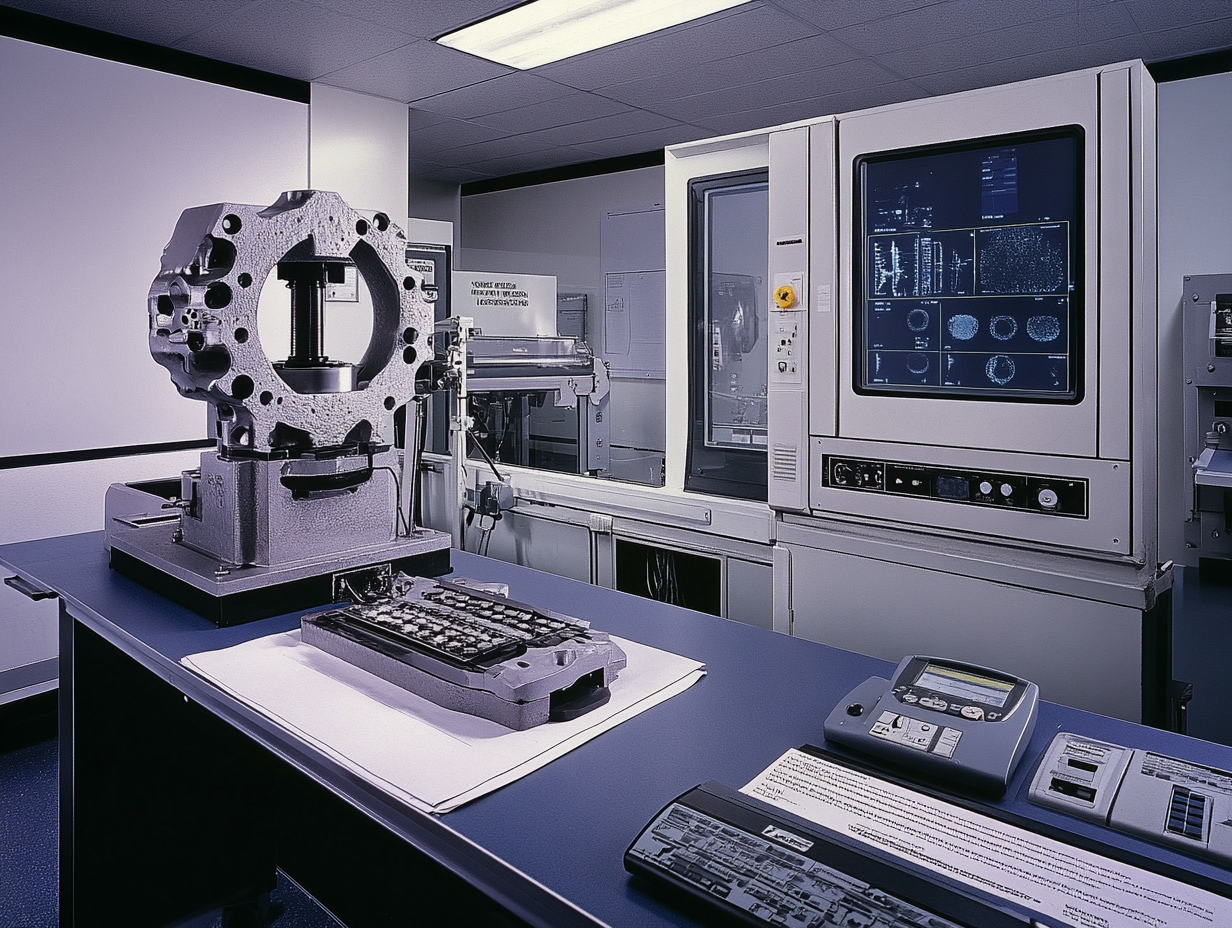

In casting production, achieving high-quality results goes beyond design and manufacturing. Testing and inspection processes are essential for ensuring the durability, performance, and compliance of cast parts with international standards. These processes help identify flaws early and enhance the final product. Here’s a comprehensive guide to testing and inspection processes for cast parts:
1. Visual Inspection
Visual inspection is the initial evaluation stage for cast parts. This process identifies surface defects such as cracks, porosity, and deformations. It’s a quick and cost-effective way to catch major issues.
- How It’s Done:
- Parts are inspected under specialized lighting.
- Magnifiers or digital cameras may be used for detailed observation.
- Advantages:
- Fast and low-cost.
- Detects surface defects early.
- Limitations:
- Cannot identify subsurface defects.
2. Dimensional Measurement
Dimensional measurement ensures that cast parts adhere to the design specifications and tolerances. This is especially critical for parts that require precise assembly.
- Tools Used:
- Micrometers, calipers, and Coordinate Measuring Machines (CMM).
- Why It’s Important:
- Ensures parts are within tolerance limits.
- Prevents assembly errors and builds customer trust.
- Example Application:
- Measuring automotive parts to millimeter precision.
3. Non-Destructive Testing (NDT)
Non-destructive testing detects internal and external defects without damaging the part. This method is vital for preserving the integrity of the part while ensuring quality.
Ultrasonic Testing (UT):
Ultrasonic waves are used to detect internal cracks and voids.
- Advantages: High accuracy for internal flaws.
- Applications: Aerospace and energy sectors.
Radiographic Testing (RT):
X-ray technology provides detailed imaging of internal structures.
- Advantages: Clear visualization of internal defects.
- Applications: Automotive and defense industries.
Magnetic Particle Testing (MT):
Magnetic fields reveal surface cracks on metallic parts.
- Advantages: Quick identification of surface flaws.
- Applications: Steel components, weld inspections.
4. Mechanical Testing
Mechanical tests assess the strength and durability of cast parts under different conditions.
Tensile Testing:
Measures the material’s resistance to pulling forces.
- Key Insights: Maximum tensile strength and breaking point.
Hardness Testing:
Determines the surface hardness of the material.
- Test Types: Rockwell, Brinell, or Vickers methods.
Impact Testing:
Evaluates the material’s ability to withstand sudden shocks.
- Applications: Critical in construction and automotive industries.
5. Quality Certification and Standards Compliance
Ensuring compliance with international standards (e.g., ISO, ASTM, DIN) instills confidence in customers and enhances market competitiveness.
- Certification Process:
- Documenting test results.
- Confirming compliance with specified standards.
- Why It Matters:
- Provides quality assurance.
- Increases market acceptance of products.
Testing and inspection processes are integral to achieving high-quality casting production. Utilizing the right methods and tools not only prevents manufacturing errors but also elevates customer satisfaction. Professional execution of these processes ensures long-term success and trust in the marketplace.

